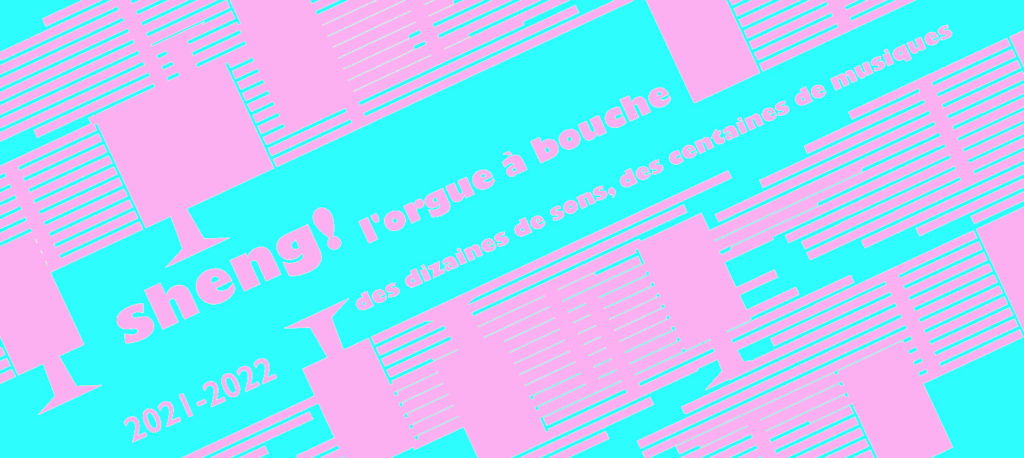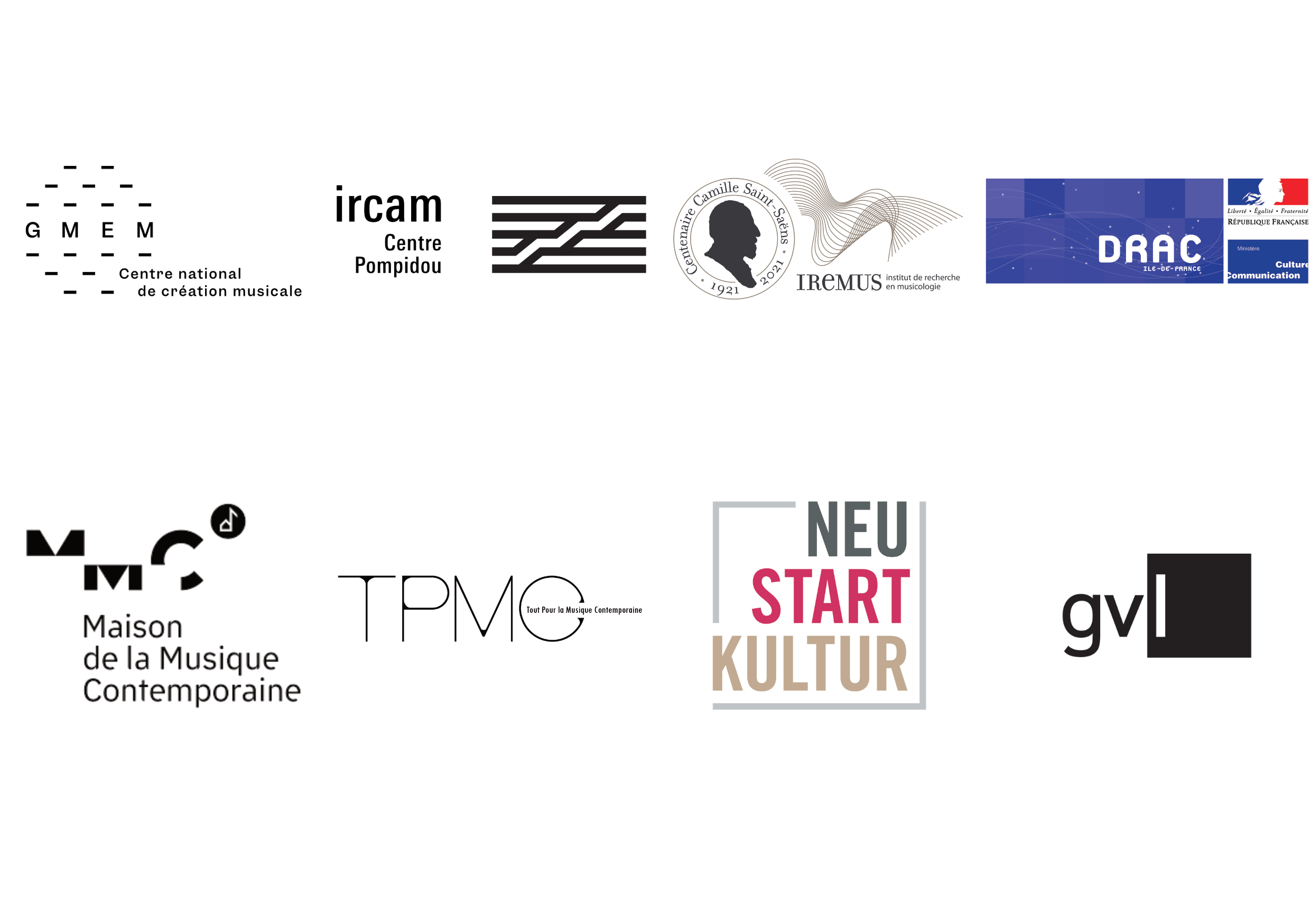
Jean-Marc Chouvel (Sorbonne Université, IReMus)
Pierre Couprie (Université d’Évry / Université Paris-Saclay)
Lin-Ni Liao (TPMC – IReMus)
Mikhail Malt (IRCAM – IReMus)
François Picard (Sorbonne Université, IReMus)
Tuesday 15 February 2022 l 14:30 l Salle Stravinsky, IRCAM (1 Place Igor Stravinsky, 75004 Paris)
François Picard (Sorbonne Université – IReMus) : Analyse comparée de quelques interprétations du « Phénix déploie ses ailes » Fènghuáng zhǎnchì (鳳凰展翅 1956)
*Musicienne invitée: Li Li-Chin
Mikako Mizuno 水野みか子 (Nagoya City University) : Japanese shō and the master of contemporary repertories, Naoyuki Manabe 真鍋尚之
Naoyuki Manabe 真鍋尚之 (maître du shō) : The tradition of Gagaku and the new world of the shō
Discussion avec Wu Wei 吳巍 (maître du sheng) sur la tradition de l’orgue à bouche **
(un dialogue entre Wu Wei et Liao Lin-Ni l Traduction allemand-français : Alexis Baskind)
Tuesday 15 March 2022 l 14:30
Dary Jamieson (Kyushu University) : Shō and u: An exploration of physical and generic limitations through a decade of collaboration with Ko Ishikawa
François-Xavier Féron (STMS – CNRS, Ircam, Sorbonne Université, Ministère de la culture) : Fallings pour shō (et u), alto et violoncelle de Daryl Jamieson : l’expression d’une pensée interculturelle
SEMINAR 14 – Une forêt de tuyaux – Retour(s) sur une création
Mardi 19 avril 2022 l 14:30 – 17:00 l Salle Stravinsky & Ircam YouTube Channel
Introduction – https://medias.ircam.fr/
Partie 1 Wu Wei – https://medias.ircam.fr/
Partie 2 Alexis Baskind – https://medias.ircam.fr/
Partie 3 André Serre-Milan – https://medias.ircam.fr/
Conclusion – https://medias.ircam.fr/
Wu Wei, sheng master and composer
Alexis Baskind, sound engineer, electronic music and sound projection
André Serre-Milan, composer
Liao Lin-Ni, artistic director
–––
Résumé FR
Pour la grande majorité des productions de studio ou de concert, le sheng (comme la plupart des instruments) est habituellement présenté comme un objet sonore extérieur à l’auditeur, c’est-à-dire une source sonore, typiquement positionnée à l’avant, avec une largeur et une distance données, placée dans un espace réel ou virtuel.
Dans le but d’explorer et de présenter le sheng d’une manière inédite, « une forêt de bambous: le sheng à 37 tuyaux présenté de l’intérieur », né de la recherche empirique entre Wu Wei et Alexis Baskind, consiste à proposer un renversement de perspective. Il s’agit de développer des méthodes pour placer l’auditeur métaphoriquement à l’intérieur du sheng, entouré par les tuyaux, de manière similaire à l’image de la « forêt de tuyaux » utilisée parfois pour l’orgue d’église. Cette idée, qui pour l’orgue peut être techniquement plus facile (quoique toujours complexe) à mettre en œuvre, pose pour le sheng des difficultés non négligeables en raison de la taille de l’instrument et du rayonnement des tuyaux (pour la plupart dirigés vers l’extérieur). Il s’agit donc de rechercher des méthodes alternatives de conception du système microphonique pour surmonter cet obstacle.
Le projet pluridisciplinaire Forêt de Bambous se déroule en plusieurs étapes entre 2020 et 2024. Nous vous présenterons la fin de la première étape de recherche et de création avec les nouvelles œuvres d’André Serre-Milan et de Wu Wei créées au Festival FARaway à l’Opéra de Reims et au Festival MaerzMusik de Berlin.
Abstract ENG
For the vast majority of studio or concert productions, the sheng (like most instruments) is usually presented as an external sound object to the listener, i.e. a sound source, typically positioned at the front, with a given width and distance, placed in a real or virtual space.
In order to explore and present the sheng in a new way, “A Bamboo Forest: The 37-pipe sheng presented from the inside”, born from the empirical research between Wu Wei and Alexis Baskind, consists in proposing a reversal of perspective. It is about developing methods to place the listener metaphorically inside the sheng, surrounded by the pipes, in a way similar to the image of the “forest of pipes” sometimes used for the church organ. This idea, which for the organ may be technically easier (though still complex) to implement, poses significant difficulties for the sheng because of the size of the instrument and the radiation of the pipes (mostly directed towards the outside). It is therefore necessary to look for alternative methods of designing the microphone system to overcome this obstacle.
The multidisciplinary project Forêt de Bambous will take place in several steps between 2020 and 2024. We will present the end of the first stage of research and creation with the new works of André Serre-Milan and Wu Wei. The works were created in the FARaway Festival at the Opéra de Reims and at the MaerzMusik Festival in Berlin 2022.
Production : TPMC – Tout Pour la Musique Contemporaine
Co-production : GMEM-CNCM-Marseille
Partenariats : DRAC Ile-de-France, IReMus – Institut de Recherche en Musicologie, IRCAM, CNRS, Sorbonne Université, GVL – Neu Start Kultur et SACEM
SEMINAR 15 Spectral Characteristics of sheng: Differential Tones
Tuesday 10 May 2022 l Salle Stravinsky, Ircam & Ircam YouTube Channel
(https://medias.ircam.fr/x9ff30c_letude-des-proprietes-spectrales-du-sheng)
Partenariats : Mikhail Malt & Julie Delisle
Duration: 1:01:44
Note: French session with English PPT
Sortie de Revue circuit – musique contemporaine, Vol. 32, n° 1
Tuesday 10 May 2022 l Salle Stravinsky, Ircam & Ircam YouTube Channel
(https://medias.ircam.fr/x078035_sortie-de-la-revue-circuit-musique-conte)
Partenariats : François-Xavier Féron & Liao Lin-Ni
Duration: 00:45:54
Note: French session
Info l www. tpmc-paris.com
Reservation l reservation@tpmc-paris.com
Question – Contact l contact@tpmc-paris.com
research 2019-2020 ∣ research 2020-2021 ∣ research 2021-2022 ∣ research 2022-2023 ∣ research 2023-2024

